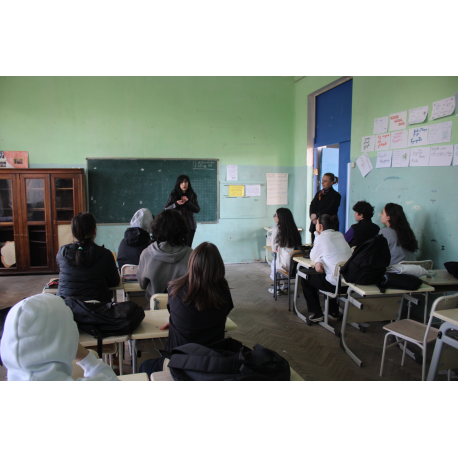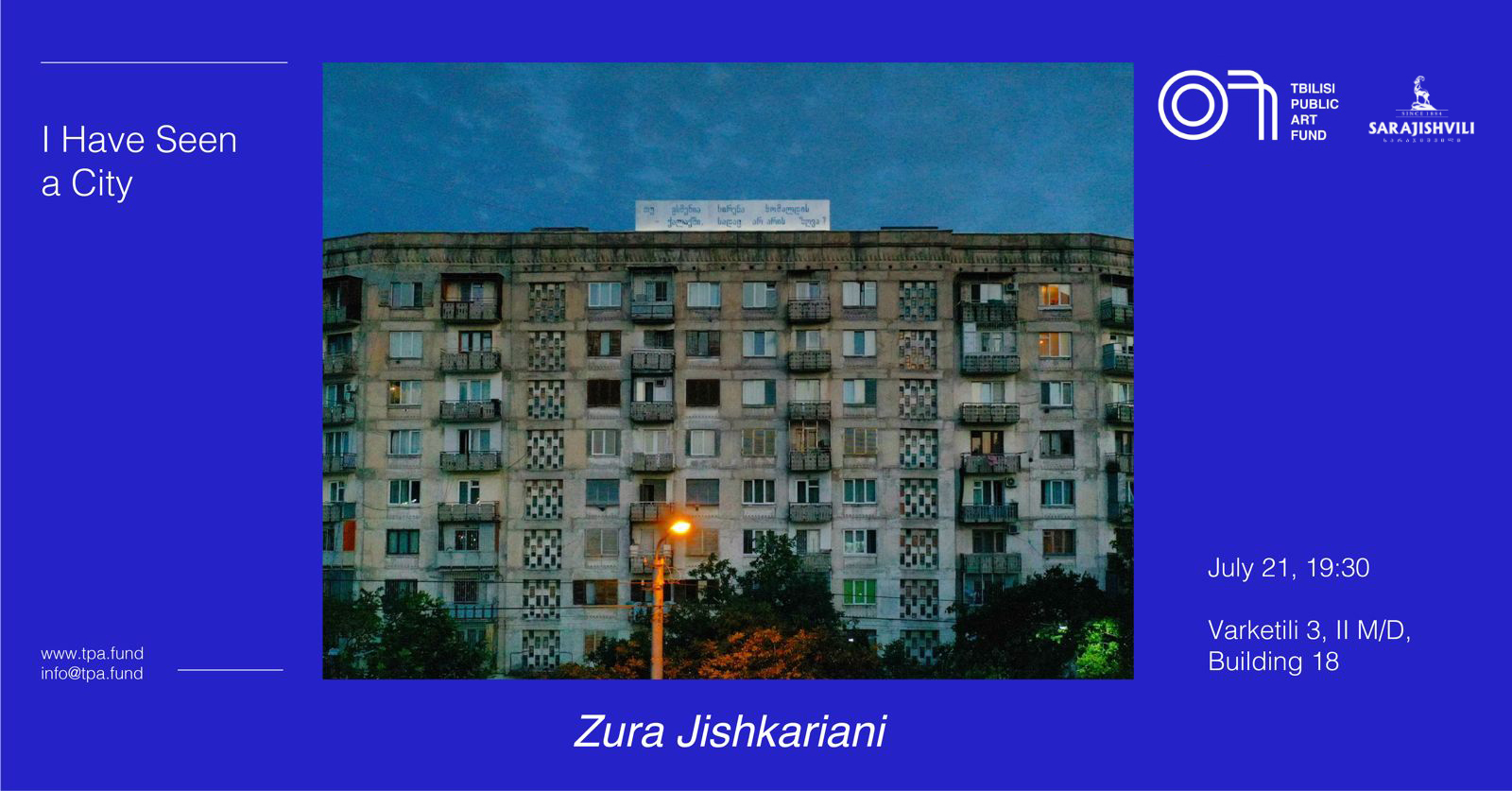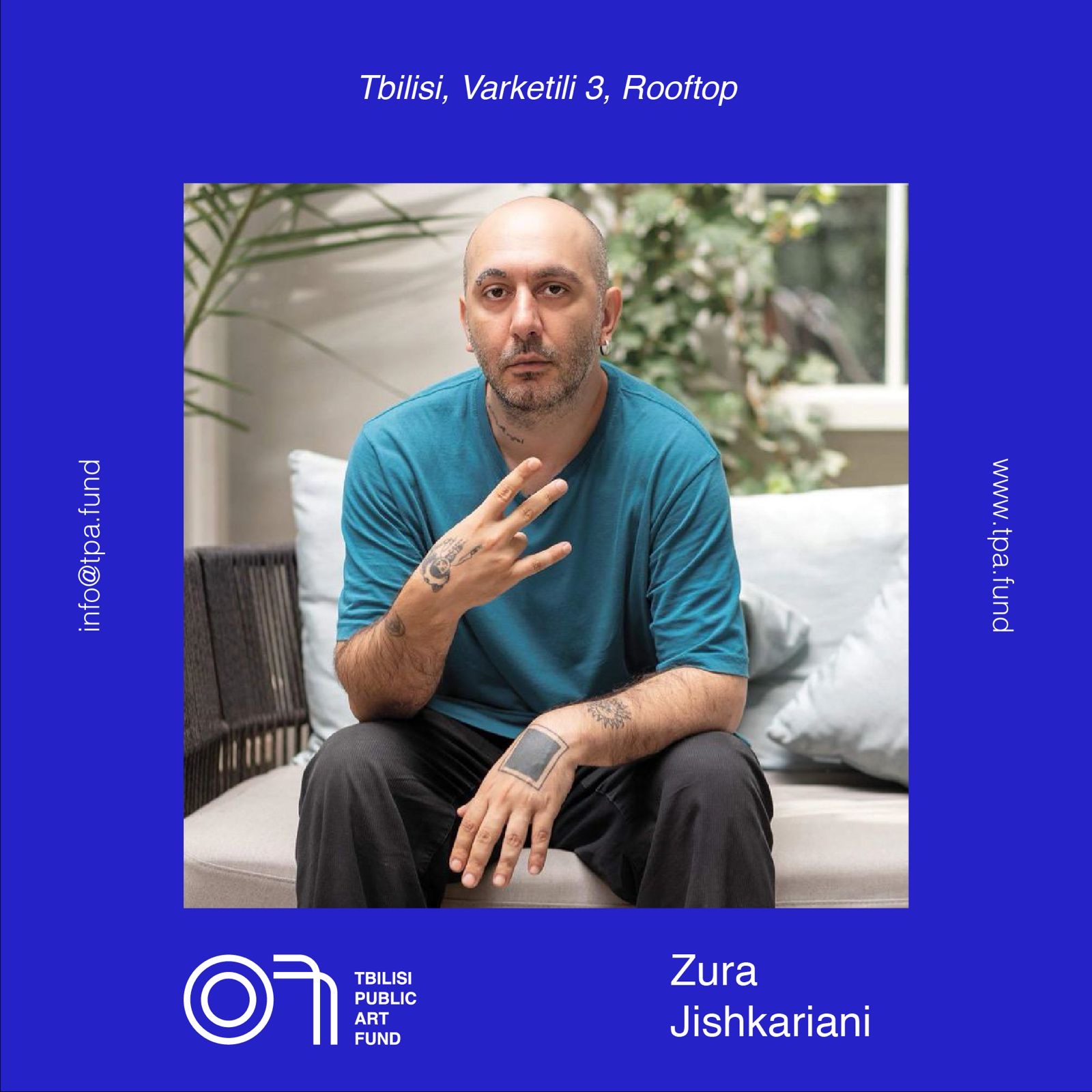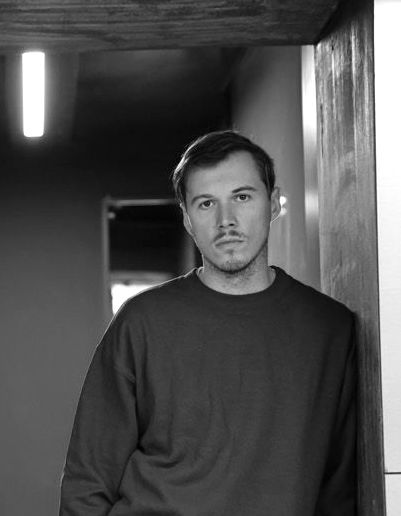 View larger
View larger

Varketili 3, Rooftop: Zura Jishkariani, I have seen a City
= More info =

Tbilisi Public Art Fund is glad to present the winning proposal for the ‘Promotion of Permanent Projects in Public Spaces, Tbilisi, Varketili 3, Rooftop’ - the ‘In-Between Conditions’ application, ‘Zura Jishkariani, I have seen a City’, architectural design Lado Lomitashvili, curator Vato Urushadze, project partner company ‘Sarajishvili’.
Artist statement:
‘Pick any passer-by and rejoice that he has inherited an incredible, vast, and utterly useless property: for example, 5,000 square miles in Antarctica, or an old circus elephant, an orphanage in Bombay, or a collection of alchemical manuscripts. Later they will realize that even for a few seconds they believed in something extraordinary, and perhaps as a result, they will try to find more interesting, intense forms of existence.’ - Hakim Bey.
My goal was, on the one hand, to avoid the standard text of advertising- exhortations, superficial and ‘positive’ phrases, on the other hand, I had to avoid problems already familiar to the suburbanites, ‘triggering’ them or aggravating their scars.
If every city tells a story, if its streets, buildings, parks and junctions tell a story, then our buildings are propositions built with zero aesthetics and minimal functionality. In this model, there was no place for the idea of enjoying the simple pleasures of life: walking, playing, spending time in the greenery or poetry. And it is interesting that these functions were introduced by the Empire, but the empire is no more, and the thick and inflexible hulls like whales still stand and will probably stand for a long time, and we must somehow learn to live with dignity in these reinforced concrete structures.
When I started working on the text, I recalled my many years of experience living in the suburbs, daily life among brutal buildings, and I realized that if any text should shine at night on top of the building, it should be at the intersection of surreal insight/pleasant surprise, happy melancholy and adventure. It should be a poetic text. As brutal and harsh as the suburb is with its reinforced concrete, the two hold so much tenderness, but these feelings cannot escape because the objects around them do not reflect them. And if we include a new object in the buildings, it is he who has the opportunity and seems to be tasked with presenting suburban surrealism. The suburbs are the most surreal place, those who live there know.
The sailing of ships in reinforced concrete, the theme of the sea, which is illuminated by letters on top of the building at night - on the one hand, creates a surreal moment (the sirens of ships in Varketili) and with its own dislocation seems to free the space locked inside, offering it to escape the programmed functionality. Moreover, it distributes old meanings in other previously unseen layers, arousing imagination, curiosity and sea breeze.
The sentence is formulated in the form of a question and is aimed not so much at giving an answer (it is difficult to answer such a question), but at stirring up new and foreign or perhaps old and forgotten feelings.
Artwork Location:
https://maps.app.goo.gl/thG3GDNeVgkzRfyJ9?g_st=com.google.maps.preview.copy
About the team:

Zura Jishkariani
Zura Jishkariani, a writer and self-proclaimed mayor of Sukhumi, was born in 1985 in Sukhumi. He pursued his studies from 2003 to 2006 at Tbilisi State University, focusing on the Faculty of Social Sciences. In 2024 he returned to the academia to complete his degree. His academic interests revolved around language and its boundaries, viewing language as both a tool for communication and a reflection of past human experiences.
Jishkariani first gained public attention through his involvement in the musical project ‘Kung Fu Junkie’. His musical endeavours viewed music as a form of language and he’s been involved with other popular Georgian musical projects. Notably, his exploration of non-verbal communication was showcased at ExpoGeorgia in 2017 with the exhibition 'Who Will Still the Roaring of The Seas?' and at the SOU festival, featuring a suspended ship connected to the Black Sea via sensors, producing sounds corresponding to the sea's waves.
As a writer, Jishkariani stands out in contemporary Georgian literature with his unique narrative and writing style. His debut novel, 'The Chewing Dawns: Sugar Free' received critical acclaim, earning the 'Best Novel of the Year' award from Ilia State University in 2017 and the 'Saba' literary prize for the best debut in 2018.
In addition to his literary pursuits, Jishkariani is actively involved in high-tech projects, including video games and chatbots. Notable examples include 'CyberGalaction', a chatbot based on the poet Galaction Tabidze, and 'Oraculum 0.1', an interactive installation featured at the Frankfurt Book Fair in 2018. His video games, such as 'My Georgia', 2023 and 'GRANELY', 2024, blend text and technology to engage students and gamers alike.
In-Between Conditions
In-Between Conditions is an independent platform based on transdisciplinary artistic practices, which combines media art, technology, science and other synthetic contexts of modern culture. In-Between Conditions is a reflection on today's changing era, where the fastest pace of technological development, uncontrolled processes of digital information dissemination, permanent Internet connection of time and space, media manipulations, fake 'knowledge' and information, alternative or simulated realities fundamentally transform a person’s perspectives as well as perceptions. The main principle of the platform's functioning is a complex curatorial approach, which aims to identify changing socio-political contexts, develop cultural infrastructure and generate new knowledge and manifestations of expressive forms.
The platform was founded in 2018 and since then has implemented a number of important artistic projects, including Mariam Natroshvili & Detu Jintcharadze, ‘I Pity the Garden’, the Georgian National Pavilion at the 59-th Venice Biennale, 2022; ‘Nomos Academy 2022’ - a three-month media arts educational program; New Media Art Exhibition ‘Simulation Fields’, Tbilisi Museum of Photography and Multimedia, 2021; ‘Between States’ X Tbilisi Architecture Biennale, project ‘Dicho’ | A series of continuous dialogues between Tbilisi and Milan, 2021.
.jpeg)
Vato Urushadze
Vato Urushadze (1988) is a creative economy researcher, culture manager and media art curator. Since 2018, he is the co-founder and curator of the media art platform 'In-Between Conditions'; his curatorial practice includes five large-scale media art exhibitions, including: 1. 'In-Between Conditions', which took place at Khidi in 2018; 2. 'Post.Digital.Dreams', held at the Art and Innovation Hub in 2019; 3. 'Man with a video camera | Digital oases' online exhibition, 4. 'Simulation Field held in 2021 at the Tbilisi Photography and Multimedia Art Museum 5. 'I Pity the Garden', Georgian National Pavilion at the The 59th International Art Exhibition of La Biennale di Venezia. In 2017, he received his master's degree at the Danube University of Krems with the thesis on 'Culture Strategy 2025: Contemporary Art Heritage and Collection Policy in Georgia'. In 2019, he developed a syllabus for the management and development of media art within the joint project of the British Council and the Tbilisi State Academy of the Fine Arts, which he taught as undergraduate and graduate programs in the same year. In 2021, the project application developed with his co-authorship succeeded in nominating Tbilisi as a Media Art City, and Tbilisi joined the UNESCO network of creative cities in the field of media art.

Lado Lomitashvili
Lado Lomitashvili (b.1994) graduated from Tbilisi State Academy of Arts (TSSA), the Department of Architecture and continued his education at the Design Academy Eindhoven (DAE), Netherlands, the Department of Contextual Design. While studying architecture he was interested in exploring his inner passions for various approaches to creative practices. He works multifaceted in the fields of drawing, photography, artists’ books, sculpture and installation. Every one of his artworks brings him back to architecture and product design, where materials, textures and geometries are in balance. Mostly, Lomitashvili acts in the spaces as an architect and creates site-specific installations. In past years, he was approaching different research-based projects, artist residencies, exhibitions and personal projects in Georgia and abroad. After studying in DAE, Lomitashvili came back to Tbilisi, Georgia where he founded studio ‘Gypsandconcrete’ in 2020. His studio practice is based on architecture, spatial design and conceptual furniture as well.





